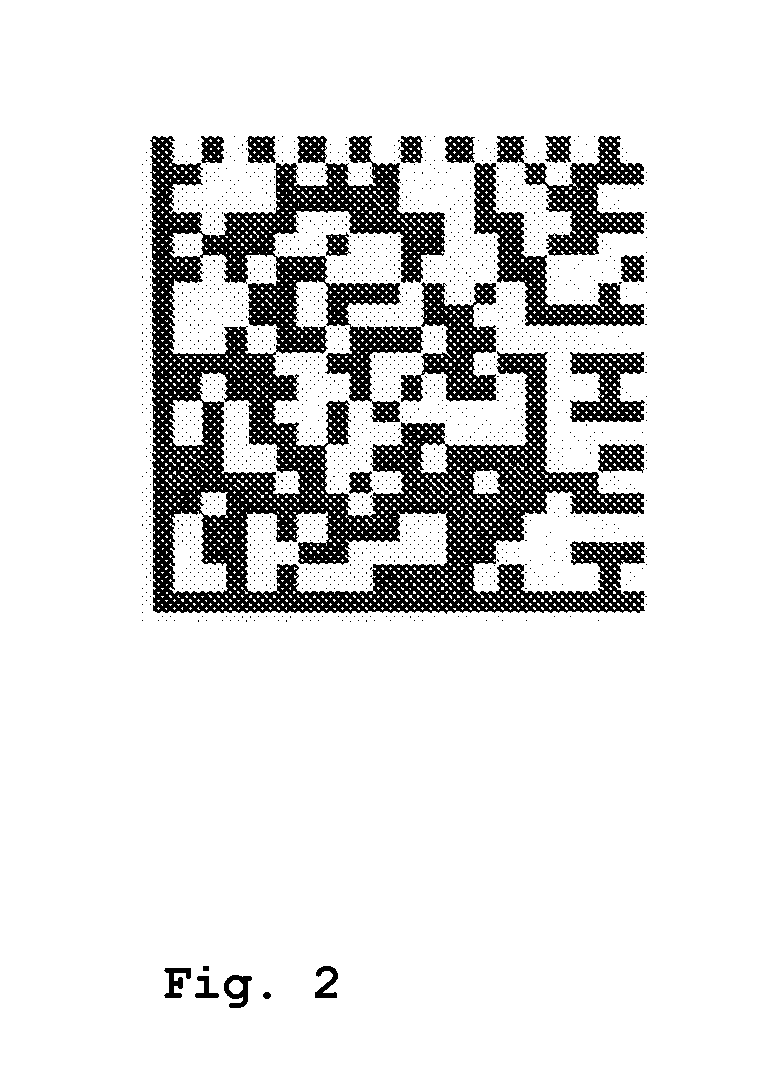Authentication method and device for protecting manufactured goods
- Summary
- Abstract
- Description
- Claims
- Application Information
AI Technical Summary
Benefits of technology
Problems solved by technology
Method used
Image
Examples
example 1
TRIF
[0089]
01NOKIA02A4423CFF5600234AA436EDC60311 / 200504540569006 690 QW 678 AS 23 56 LON PAR 540712 / 2005120007735AA324CA40026119FF90AA34C7
[0090]In the example 1, the TRIF contains a SSCC-96 EPC code referring to ID n° 12 in the TRIF, and a custom record, n° 90, used by the manufacturer to put the RGB colour code of the object.
[0091]After generating the TRIF, the manufacturer generates a digital signature called the “Manufacturer Digital Signature” (MDS). Preferably, this signature is computed using the Digital Signature Standard (DSS) based on the Digital Signature Algorithm (DSA) specified by the publication “The Digital Signature Standard (DSS)”, National Institute of Standards and Technology (NIST), FIPS Publication 186-2, January 2000. Preferably, the signing procedure is performed according to the scheme represented in FIG. 1. The alphanumeric data in the TRIF is encoded to a binary digits string using a C40 encoding according to table 4. Then the Digital Signature is computed f...
example 2
A TRIF Followed by its MDS
[0094]
01NOKIA02A4423CFF5600234AA436EDC60311 / 200504540569006690 QW 678 AS 23 56 LON PAR540712 / 2005120007735AA324CA40026119FF 90 AA34C7MDS00013734AEE34705CCE388867EEDFFDDE78AA87E45064343884366AA5537FFFFF455341009874611
[0095]Once the TRIF, comprising the MDS, has been generated, the information contained in the TRIF / MDS, are coded geometrically during a step called “spatial coding”. Preferably, this is done by using geometrical coding comprising individual elements. Preferably the geometrical coding is an at least two-dimensional shape and more preferably is a two-dimensional pixel shape for coding binary digits on a two-dimension surface in which the individual elements are pixels, such as shown in FIG. 2. This two-dimensional shape defines the “information unit”. Any well-known two-dimension barcode is usable.
[0096]Once the complete TRIF / MDS has been spatially coded, the next step consists in generating a random infinite pattern made of the same individual e...
PUM
| Property | Measurement | Unit |
|---|---|---|
| Angle | aaaaa | aaaaa |
| Time | aaaaa | aaaaa |
| Structure | aaaaa | aaaaa |
Abstract
Description
Claims
Application Information
 Login to View More
Login to View More - R&D
- Intellectual Property
- Life Sciences
- Materials
- Tech Scout
- Unparalleled Data Quality
- Higher Quality Content
- 60% Fewer Hallucinations
Browse by: Latest US Patents, China's latest patents, Technical Efficacy Thesaurus, Application Domain, Technology Topic, Popular Technical Reports.
© 2025 PatSnap. All rights reserved.Legal|Privacy policy|Modern Slavery Act Transparency Statement|Sitemap|About US| Contact US: help@patsnap.com



